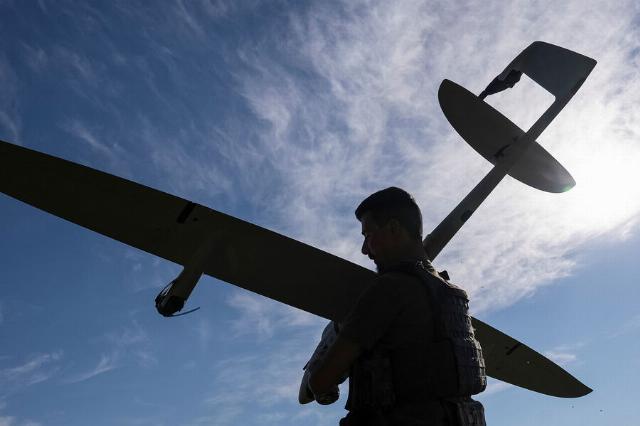Russia is developing technology that will make UAVs less vulnerable and difficult to intercept. The optical channel is more secure, it reduces the risk of interception and loss of control. In addition, the technology opens the way to "drone fleets" and unmanned airlines.
As CNews found out, a promising technology for optical communication line modules for unmanned aircraft systems (UAS) is being developed in Russia. This will solve the problem of limited range, vulnerability to interference and channel congestion, and will also help create "drone fleets" and unmanned airlines.
Tender for research work on the topic: "Development and manufacture of optical communication line modules" under the code "Thread-4" was published on July 30, 2025. 19.86 million rubles were allocated for the purpose. The customer is the Ryazan State Radio Engineering University named after V.F. Utkin. The work is expected to be completed by the end of 2025.
The purpose of the work is to develop and manufacture optical communication line modules for drones with increased optical losses and solar glare. Optical transmitting and receiving modules for BS and BAS will be developed and manufactured.
Receiving and transmitting optical modules are designed to convert optical radiation into an electrical signal and an electrical signal into optical radiation and form a distributed optical communication line (ROLS) in combination with transmitting and receiving fiber-optic side-radiation lines.
"Optical communication modules are a promising technology for UAS that can solve a number of limitations of radio channels," said Anton Blik, Director of Unmanned Fleet. "Currently, most drones use radio communications, which have their own problems: limited range, vulnerability to interference and channel congestion near infrastructure."
According to him, the optical channel is more protected from radio interference and does not require licensed frequencies, and it will potentially significantly increase the range and stability of communication between base stations and drones. "This opens the way to the creation of normal drone fleets in one area without mutual interference and reduces the risk of loss of control," says Blick.
Currently, the lack of such solutions means that operators have to rely on radio channels, which can operate unstable in conditions of a large number of drones, complex industrial buildings or high security requirements, the expert explains.
"In fact, this is a step towards the industrial creation of unmanned airlines: with stable optical communications, it is possible to build full—fledged unmanned logistics networks competing with helicopters and ground transport rather than crutches," Anton Blik concluded.
The use of optical modules will also reduce the risks of interception, said Alexander Zamyatin, Head of Strategic Project Implementation at GLONASS.
The lack of optical communication line modules currently hinders the development of communication lines for civilian drones due to the difficulty of obtaining various types of permits and ensuring electronic compatibility. As a result, there is a significant loss of revenue and profits by enterprises associated with UAS and RTK due to failed sales of drones and services," says Zamyatin. "The export potential of the Russian UAS industry is also not being fully exploited."
According to his estimates, the cost of optical communication line modules in small-scale production varies from 60 to 80 thousand rubles. The estimated price of such a module will be from 120 to 150 thousand rubles. The volume of the domestic market in this segment is more than 1 billion rubles until 2035.
In addition, a separate class of airspace for UAVs has appeared in Russia. Russia has become one of the few countries that has introduced a separate class of airspace for drone flights. This should contribute to the development of the production of unmanned aerial vehicles in the country.
By a government decree signed by Prime Minister Mikhail Mishustin, Russia has introduced a new class of airspace H ("HH") for unmanned aerial vehicles (UAVs), writes TASS.
Class H is installed in the airspace from 0 to 150 m from the ground or water surface, as well as on routes specially designated for drone flights at altitudes below 3.05 thousand meters. Information about specific routes and conditions of their use will be published by the Federal Air Transport Agency.
Before the introduction of Class H in Russia, there were three classes for different modes of airspace use — A, C and G.
"Our country has become one of the few that has approved a separate class of airspace for drones," commented Deputy Prime Minister Vitaly Saveliev. The solution will enhance the integration of unmanned aircraft systems into the airspace and simplify their operation, he noted.
President Vladimir Putin proposed creating a new class of airspace for simplified use of drones in January 2025. In most regions of Russia, bans on the use of UAVs were introduced in the fall of 2022. Putin called the opening of skies for civilian drones in safe regions in compliance with other necessary conditions "a fundamental issue for the rapid development of the industry, for testing and mass production of new products."

